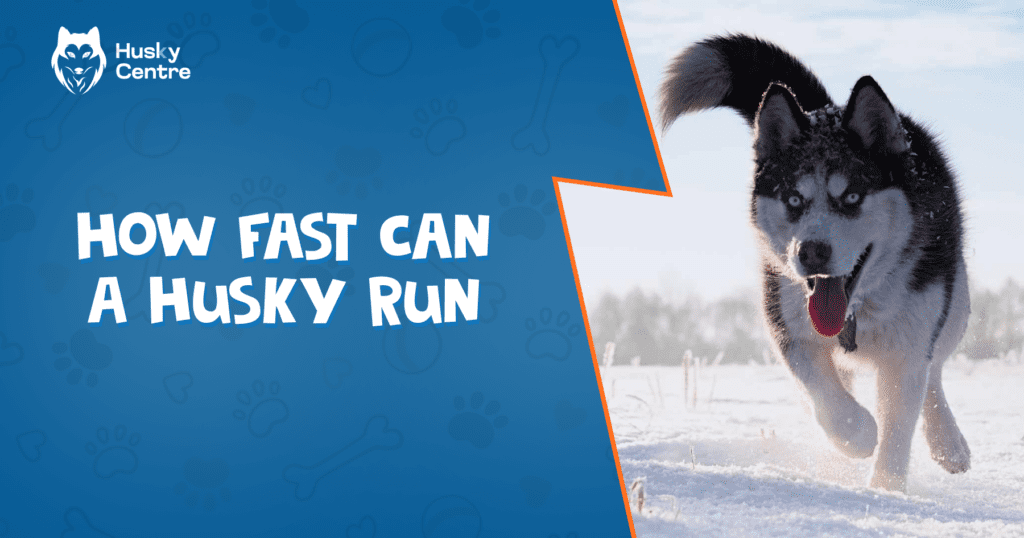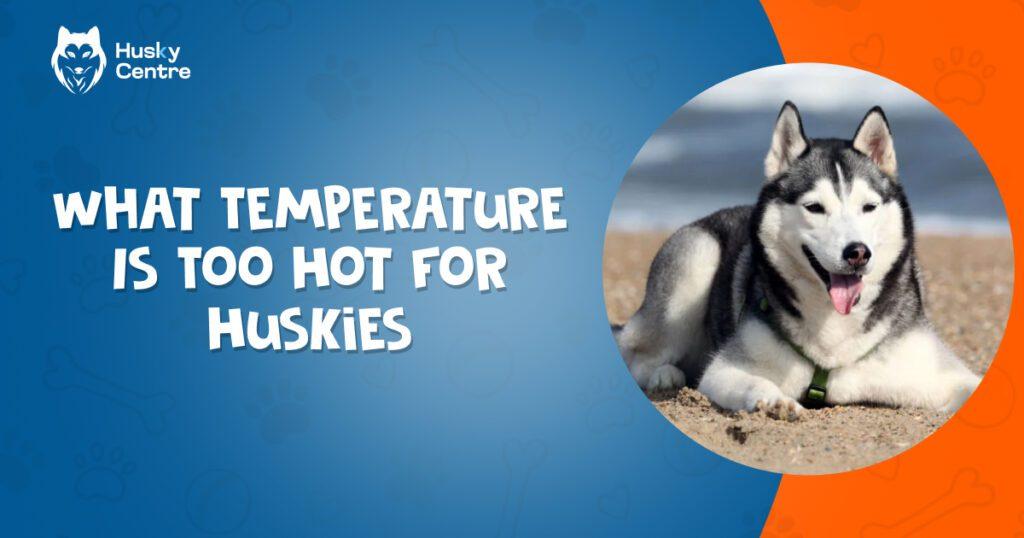A Husky can run at speeds up to 30 mph. They are known for their endurance and agility.
Is your husky panting like a steam engine? While panting is normal for dogs, excessive panting can be a sign of something more.
Huskies are known for their love of cold weather, but even they can get hot and bothered. This article explores the different reasons behind a husky’s panting and helps you determine when it’s time to visit the vet.
Understanding Husky Physiology
The Husky is known for its impressive speed and stamina. Understanding Husky physiology helps us appreciate why this breed excels in various physical activities. Their unique characteristics make them exceptional runners.
Bred For Speed And Stamina
Huskies were originally bred by the Chukchi people of Siberia. Siberian needed service dogs that could pull sleds over long distances. This selective breeding gave Huskies their remarkable speed and endurance.
- Sled Dogs: Huskies were bred to pull sleds for many miles in harsh conditions.
- Endurance: They can run up to 20 miles per hour and maintain a steady pace over long distances.
- Energy Levels: They have high energy levels, which help them run for hours without tiring.
Their genetic makeup allows them to convert energy efficiently. This ability is crucial for long-distance running. They have a unique metabolic rate that helps them avoid fatigue. Their bodies are designed to store and use energy effectively.
Athletic Build
The athletic build of a Husky is another key factor in their running ability. Their bodies are lean yet muscular, optimized for movement and agility.
- Lean Muscles: Their muscles are not bulky, allowing for greater flexibility and speed.
- Strong Limbs: Their legs are strong and sturdy, providing the power needed for quick, long strides.
- Body Structure: They have a streamlined body that reduces air resistance when running.
Below is a table summarizing the physical traits that contribute to their athleticism:
| Physical Trait | Benefit |
|---|---|
| Lean Muscles | Enhanced speed and flexibility |
| Strong Limbs | Powerful and quick strides |
| Streamlined Body | Reduced air resistance |
Double Coat
The Husky’s double coat is not just for insulation. It plays a vital role in their ability to run fast and far.
- Insulation: The undercoat keeps them warm in cold climates, allowing them to run in frigid conditions.
- Protection: The outer coat protects them from wind and snow, maintaining their body temperature.
- Temperature Regulation: The coat helps regulate the body temperature, preventing overheating during long runs.
The double coat allows Huskies to perform in various weather conditions. They can run in the snow, rain, and even moderate heat. This adaptability makes them versatile runners.
The combination of an insulating undercoat and a protective outer coat ensures they stay comfortable. This unique feature contributes to their impressive running capabilities.
How Fast Can a Husky Run?
Huskies are known for their remarkable speed and stamina. These dogs are not just beautiful; they are also built for running. So, how fast can a Husky go?
Impressive Top Speeds
Huskies can reach incredible speeds that showcase their agility and power. On average, a healthy Husky can run at speeds of up to 28-30 miles per hour. This makes them one of the fastest dog breeds.
Several factors contribute to a Husky’s top speed:
- Physical Build: Huskies have strong, muscular legs and a light frame.
- Training: Regular exercise and training can enhance a Husky’s speed.
- Health: A well-nourished and healthy Husky performs better.
Comparing a Husky’s speed to other animals can give a better perspective:
| Animal | Top Speed (mph) |
|---|---|
| Husky | 28-30 |
| Greyhound | 45 |
| Horse | 55 |
Short Bursts Vs. Long Distances
Huskies excel not only in short sprints but also in long-distance running. They can maintain their speed over extended periods. This dual capability is rare among dog breeds.
In short bursts, Huskies can hit their top speed of 28-30 mph. These bursts are usually seen during play or when chasing something.
For long distances, Huskies can cover up to 100 miles in a day at a steady pace of 10-12 mph. This makes them perfect for activities like sledding and long-distance running.
The key differences between short bursts and long distances:
- Energy Use: Short bursts require quick, explosive energy.
- Stamina: Long distances rely on endurance and stamina.
- Recovery: Short bursts need more recovery time.
Endurance Specialists
Huskies are not just fast; they are also known for their incredible endurance. This endurance is why they are popular in sledding and long-distance racing.
Several factors make Huskies endurance specialists:
- Metabolism: Huskies have a unique metabolism that allows them to use energy efficiently.
- Muscle Composition: Their muscles are designed for long periods of activity.
- Breathing: Huskies have an efficient respiratory system that supports long runs.
During sled races, Huskies can run for hours without tiring. They can cover vast distances, making them ideal for competitive sports like the Iditarod Trail Sled Dog Race.
To sum up, Huskies are not just fast runners; they are built for both speed and endurance. Whether in short bursts or over long distances, they excel and amaze with their capabilities.
Factors Affecting Speed
Huskies are known for their speed and endurance. These athletic dogs can run incredibly fast, but several factors affect their speed. Understanding these factors can help you optimize your Husky’s performance and ensure their well-being.
Training And Conditioning
Training and conditioning play a crucial role in how fast a Husky can run. A well-trained Husky is likely to run faster and longer compared to one without proper training. Here are some key aspects:
- Regular Exercise: Huskies need regular exercise to build their muscles and stamina. Daily runs or jogs can significantly improve their speed.
- Balanced Diet: Providing a balanced diet with the right nutrients helps in muscle development and energy levels. High-protein foods are beneficial.
- Consistency: Consistent training schedules help Huskies maintain their peak physical condition. Random or irregular exercise routines can hinder their performance.
- Strength Training: Incorporating strength training exercises, such as pulling sleds or weights, can build stronger muscles, enhancing their running speed.
A table summarizing training and conditioning factors:
| Factor | Impact on Speed |
|---|---|
| Regular Exercise | Increases stamina and speed |
| Balanced Diet | Improves muscle development |
| Consistency | Maintains peak condition |
| Strength Training | Builds stronger muscles |
Age And Health
Age and health are significant factors affecting a Husky’s running speed. Younger Huskies usually run faster than older ones. Health issues can also slow them down. Here are some points to consider:
- Puppies and Young Adults: Puppies have boundless energy but lack the endurance of adult Huskies. Young adults are often at their peak running speed.
- Senior Huskies: Older Huskies may experience joint pain or arthritis, affecting their speed. Regular vet check-ups can help manage these issues.
- Health Conditions: Conditions like hip dysplasia or heart problems can significantly reduce a Husky’s speed. Always consult with a vet for a proper health plan.
- Weight Management: Overweight Huskies tend to run slower. Keeping your Husky at an ideal weight is crucial for maintaining their speed.
Health considerations table:
| Age Group | Speed Potential |
|---|---|
| Puppies | High energy but lower endurance |
| Young Adults | Peak running speed |
| Seniors | Reduced speed due to health issues |
Terrain And Conditions
The terrain and environmental conditions also affect a Husky’s running speed. Different terrains and weather conditions can either enhance or hinder their performance. Key points include:
- Flat Surfaces: Huskies run faster on flat surfaces like pavements or fields. These surfaces provide stable footing.
- Rough Terrains: Uneven or rocky terrains can slow Huskies down. These surfaces require more energy and effort to navigate.
- Weather Conditions: Cold weather suits Huskies best. They thrive in snowy conditions and can run faster in the cold. Hot weather can cause them to tire quickly.
- Altitude: Higher altitudes with thinner air can affect their stamina and speed. Huskies may need time to acclimate to high altitudes.
Terrain and conditions table:
| Condition | Impact on Speed |
|---|---|
| Flat Surfaces | Faster running speed |
| Rough Terrains | Slower running speed |
| Cold Weather | Enhanced performance |
| Hot Weather | Reduced stamina |
| High Altitude | Needs acclimation |
Comparing Speeds
Huskies are known for their endurance and speed. But how fast can a Husky run compare to other dog breeds? Let’s dive into this topic by comparing the speeds of Huskies with other fast dog breeds.
Greyhound – Undisputed Champion
The Greyhound holds the title of the fastest dog breed. These sleek, aerodynamic dogs can reach speeds of up to 45 miles per hour. Their bodies are built for speed with long legs, a flexible spine, and a deep chest for large lung capacity.
Here are some key features that make Greyhounds the speed champions:
- Long, powerful legs: Provide strong propulsion.
- Flexible spine: Allows for a longer stride.
- Deep chest: Houses large lungs and heart for better oxygenation.
Here’s a comparison table of Greyhound speeds with other fast breeds:
| Breed | Top Speed (mph) |
|---|---|
| Greyhound | 45 |
| Saluki | 42 |
| Afghan Hound | 40 |
| Husky | 28 |
Other Speedy Breeds (mention A Few)
While Greyhounds may be the fastest, several other breeds are also known for their impressive speeds.
Here are a few notable mentions:
- Saluki: With speeds up to 42 miles per hour, Salukis are known for their grace and agility. They have a long, lean build and are often used in racing and hunting.
- Afghan Hound: These dogs can reach speeds of 40 miles per hour. They have a unique appearance with long, flowing hair and are highly agile.
- Whippet: Often called the “miniature Greyhound,” Whippets can run up to 35 miles per hour. They are smaller but share many physical traits with Greyhounds.
- Borzoi: Also known as Russian Wolfhounds, Borzois can reach speeds of 35 miles per hour. They have a sleek build and are known for their endurance.
While Huskies are not the fastest, they can still reach speeds of up to 28 miles per hour. Their strength lies in their endurance, making them excellent sled dogs capable of covering long distances.
Understanding the speeds of these breeds helps highlight the unique strengths of each. While Huskies may not be the fastest, their endurance and stamina make them special in their own right.
Responsible Husky Exercise
Huskies are known for their incredible speed and stamina. They can run up to 28 miles per hour. To maintain this energy, they need proper exercise. Responsible Husky exercise is crucial for their health and happiness. It involves regular physical activities and safe exercise environments.
Importance Of Daily Exercise
Daily exercise is essential for Huskies. It helps them stay fit and healthy. Without enough exercise, Huskies can become bored and destructive. Regular exercise offers several benefits:
- Improved cardiovascular health: Running keeps their heart strong.
- Weight management: Helps prevent obesity.
- Mental stimulation: Reduces anxiety and boredom.
A typical Husky needs at least 1 to 2 hours of exercise each day. This can include walks, runs, and playtime. Here is a simple table to guide you:
| Exercise Type | Duration |
|---|---|
| Walk | 30-60 minutes |
| Run | 20-30 minutes |
| Playtime | 30-60 minutes |
Safe Exercise Outlets
Huskies need safe places to exercise. They love open spaces where they can run freely. It is important to find secure areas. Here are some safe exercise outlets:
- Fenced yards: Ensure the yard is secure.
- Dog parks: Good for socializing and running.
- Hiking trails: Provides mental and physical stimulation.
Always supervise your Husky during exercise. Use a leash in open areas to prevent them from running away. Consider indoor exercise options during extreme weather:
- Treadmills: Great for rainy days.
- Interactive toys: Keeps them engaged indoors.
Preventing Injuries
Preventing injuries is a key part of responsible Husky exercise. Over-exercising can lead to injuries. Here are tips to keep your Husky safe:
- Warm-up sessions: Start with light activities.
- Monitor their health: Watch for signs of fatigue.
- Check the ground: Avoid rough or hot surfaces.
Invest in proper gear like harnesses and booties. These protect their paws and joints. Regular vet check-ups are also important. They help detect any potential issues early:
- Joint health: Prevents arthritis.
- Muscle condition: Ensures they are not overworked.
Always hydrate your Husky during and after exercise. Dehydration can lead to serious health issues. Following these steps ensures your Husky stays healthy and happy.
Husky Running Safety
Huskies are known for their impressive speed and endurance. These energetic dogs can run at speeds up to 28 miles per hour. While their ability to run fast is fascinating, ensuring their safety during runs is crucial. Understanding Husky running safety can help keep your furry friend healthy and happy.
Proper Warm-up
Before any run, ensure your Husky has a proper warm-up. This can include a short walk or light jog. Warming up helps prevent injuries and prepares their muscles for more intense activity.
Monitor Weather Conditions
Huskies have thick fur coats that make them more sensitive to heat. Always check the weather before heading out. Avoid running in hot temperatures to prevent overheating. Early mornings or late evenings are usually the best times for a run.
Stay Hydrated
Hydration is vital for your Husky’s health. Always carry water and a portable bowl. Offer water breaks during your run to keep your Husky hydrated. Dehydration can lead to serious health issues.
Use Proper Gear
A well-fitted harness is essential for safe running. Avoid using a collar, as it can strain their neck. Reflective gear is also important if you run in low-light conditions. Safety gear ensures your Husky is visible and secure.
Check For Signs Of Fatigue
Watch for signs of fatigue such as heavy panting, lagging behind, or limping. If you notice any of these signs, stop and allow your Husky to rest. Pushing them too hard can lead to injuries.
Running Surface
The surface you run on impacts your Husky’s paws. Stick to grass or dirt trails when possible. Avoid hot pavement or rough surfaces to protect their paw pads. Regularly check their paws for cuts or abrasions.
Gradual Training
If your Husky is new to running, start with short distances. Gradually increase the distance and intensity over time. This builds their stamina and helps prevent injuries.
Vet Check-ups
Regular vet check-ups are crucial for a running Husky. Ensure your dog is in good health and has no underlying conditions. Your vet can provide personalized advice for your Husky’s running routine.
Frequently Asked Questions
How Fast Can A Husky Dog Run?
A Husky dog can run up to 28-30 miles per hour. They excel in endurance and long-distance running.
How Long Can Huskies Run Without Stopping?
Huskies can run up to 100 miles in a day without stopping. They are known for their incredible stamina and endurance.
What Is The Average Speed Of A Husky?
The average speed of a Husky is around 10 to 15 miles per hour. They can sprint up to 28 miles per hour.
Can Huskies Run 100 Miles A Day?
Huskies can run long distances but 100 miles daily is extreme. They typically run 20-40 miles a day. Proper training and rest are crucial.
Conclusion
A Husky’s speed is impressive, reaching up to 28 mph. This breed’s agility and endurance make them exceptional runners. Their natural athleticism suits various activities, from sledding to jogging. Understanding a Husky’s running capability helps in providing proper exercise. Ensure your Husky stays healthy and happy with regular, engaging activities.


Meet Jarred, the heart and soul behind HukyCentre. With a deep affection for furry friends, he pours his passion into every word he writes. His genuine love for dogs shines through in his engaging and informative content. As a dedicated dog enthusiast, Jarred’s goal is to share valuable insights and tips that resonate with fellow dog lovers. Join Jarred on the journey as he celebrates the joy and companionship that dogs bring into our lives.



